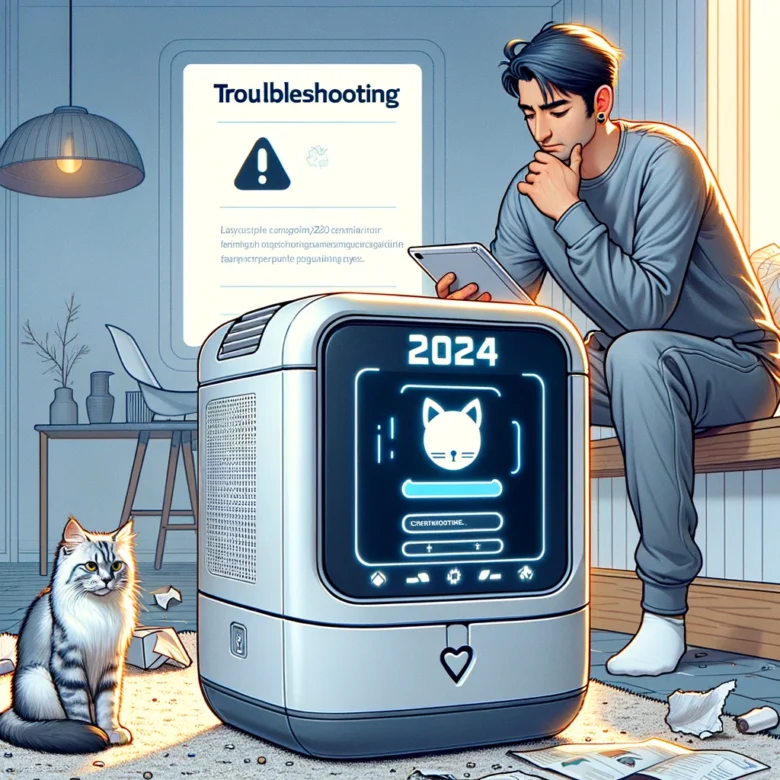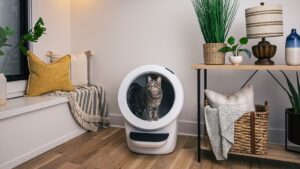Self-cleaning litter boxes have dramatically changed the way cat owners ensure the comfort and hygiene of their feline companions. These groundbreaking devices increase efficiency and convenience by eliminating the need to manually empty bins, ensuring cleanliness. However, like any electronic device, they can easily malfunction and require troubleshooting. This detailed guide aims to explore common issues related to self-cleaning bins in 2024 and provide pragmatic solutions to effectively reduce them.
Automatic trash overview
What is a self-cleaning waste container?
Waste bins that are designed to automatically remove waste from the litter box are called self-cleaning litter bins. Typically, they use mechanical mechanisms and sensors to detect and eliminate waste, creating a hygienic environment for your cat.
Benefits of using automatic waste containers
Saves time and effort; reduces unpleasant odors; improves cat hygiene; reduces the frequency of cleaning the litter box
Troubleshooting instructions
What problem solving means
To maintain the functionality of your self-cleaning dumpster, troubleshooting is critical. By solving problems quickly, you can prevent further damage and ensure optimal performance.
Frequently asked questions about self-cleaning waste containers
Complexity of power transmission
Sensor failure
mechanical barriers
Waste container problems
programming error
Before you troubleshoot infrastructure issues
Assembling the necessary tools and materials is a crucial first step in troubleshooting a self-cleaning litter box. Additionally, creating a safe and enjoyable environment for problem solving can help reduce anxiety for you and your feline companion.
Troubleshooting steps
Step One: Power Problems
Make sure the power cord is plugged into a working electrical outlet. If the problem persists, try using an alternate electrical outlet or replacing the power cord to open the waste bin.
Step 2: Sensor error
Thoroughly inspect the sensor for any dirt or debris that could hinder its operation. Make sure the sensor is positioned correctly and clean it gently with a soft cloth.
Mechanical blocking (step 3)
Check the dumpster for any obstructions, including foreign objects or piles of trash. After all obstacles have been removed, test the device again.
Step 4: Dumpster Problems
Clean and empty the litter box thoroughly to prevent odor buildup and the possibility of clogs. Make sure the litter box is securely attached to the container.
Programming error in step 5
Reprogram the litter box to its original settings according to the manufacturer’s guidelines. Scan for software updates that can fix the identified issues.
Cleaning and maintenance, step 6
Maintain and disinfect your self-cleaning litter box regularly to avoid complications. Clean regularly and follow manufacturer’s guidelines for product compatibility.
Complex problem solving methods
distinguish complex issues
If initial troubleshooting measures do not result in a satisfactory resolution, consider seeking advice from the manufacturer’s customer support team or seeking the assistance of a qualified technician with expertise in self-cleaning litter boxes.
Ask for expert help
If the problem is beyond your knowledge or the device is still under warranty, you should seek further assistance from the manufacturer or an authorized service center.
Precaution
Consistent maintenance recommendations
Clean the litter boxes regularly.
Rejection of rental premium
Replace worn parts if necessary.
Avoid frequent mistakes
Unable to empty the waste container
Use unacceptable forms of spam
Neglecting routine maintenance responsibilities
overall,
Troubleshooting a 2024 self-cleaning litter box can be a simple task with the right information and preparation. By following the procedures and implementing preventative measures outlined in this manual, you can ensure the continued operation and sanitary environment of your precious feline companion.
When should I routinely clean my self-cleaning litter box?
Clean your litter box at least once a week to prevent odor formation and ensure optimal performance.
Objects or mechanical obstacles that could be sources of interference. If the problem persists, please contact customer support for assistance.
In what ways can you extend the life of a self-cleaning waste container?
Ongoing maintenance, thorough cleaning, and preventing bin overload are all strategies that can help extend the life of your containers.
What should I do if my self-cleaning litter box suddenly stops working?
Before continuing, check the power supply and sensor for defects. If standard troubleshooting does not resolve the issue, please contact the manufacturer for further assistance.


